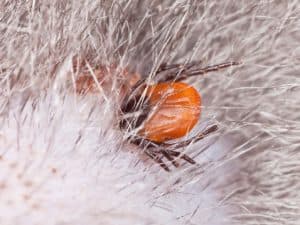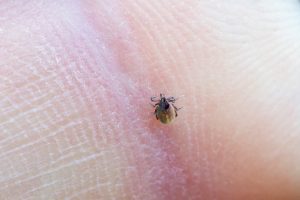We all know fleas and ticks are a problem for our feline friends, but how much do you really know about these dangerous parasites? Here are 10 freaky facts you probably didn’t know about fleas and ticks…do you feel itchy yet?

1: A female flea can lay at least 20 eggs a day.
Half of the eggs will be female, which will also lay 20 eggs a day. They will eventually produce about 20,000 new fleas in 60 days!

2: Fleas can jump 110 times their length.
So, a flea jumping several inches is the equivalent of you jumping over a 30-story building! Whoa.

3: They’re extremely fast.
Not only can they jump incredibly high, when a flea jumps, it accelerates 20 times faster than a space shuttle! That’s out of this world.

4: Fleas have been on the earth for at least 165 million years.
Back then, they were much larger than today’s fleas, and they would have dined on dinosaurs instead of cats and dogs!

5: Contrary to popular belief, winter does not always kill fleas.
Many larvae can survive short periods of freezing temps as long as they are wrapped snuggly in their cocoons. That’s why it’s recommended that you use flea prevention on your pet all year long!

6: Ticks are arachnids.
Meaning they are more closely related to spiders and scorpions than insects because they have 8 legs.

7: Ticks do not fly, jump, or fall from trees.
Ticks can’t fly or jump, but they do wait in a position known as “questing”. While questing, ticks hold onto leaves and grass by their third and fourth pair of legs. They hold the first pair of legs outstretched, waiting to climb onto you or your pet when it walks by.

8: A tick’s saliva acts like cement, helping to anchor the tick in place and making it harder for you to remove it.
That said, researchers in Brazil believe that a protein in tick saliva might hold the key to curing cancers of the skin, liver, and pancreas.

9: There are more than 850 species of ticks on the planet.
Wanna know which species are most common where you live? Check out this map provided by the CDC.

10: Bites from a Lone Star Tick can cause rare allergies to red meat in humans!
Dogs can also develop this allergy and will react with itching, skin lesions, and hair loss if their diets contain beef, lamb, or pork. Lone Star Ticks are widely found in the southeastern and eastern United States.
Do you feel itchy yet? I do!
Found this article freaky? Pin it!








